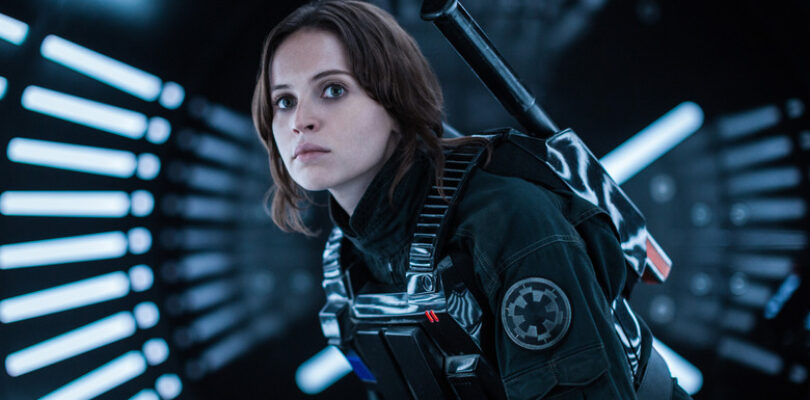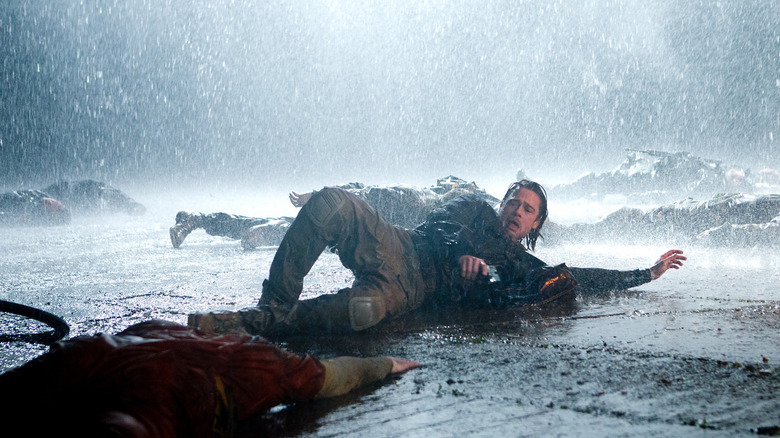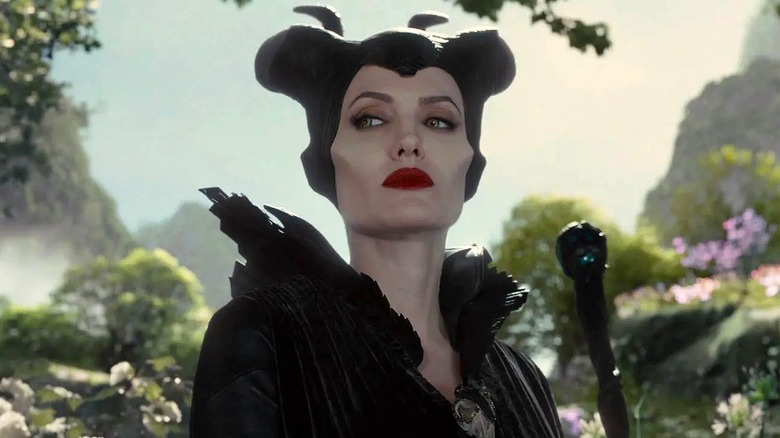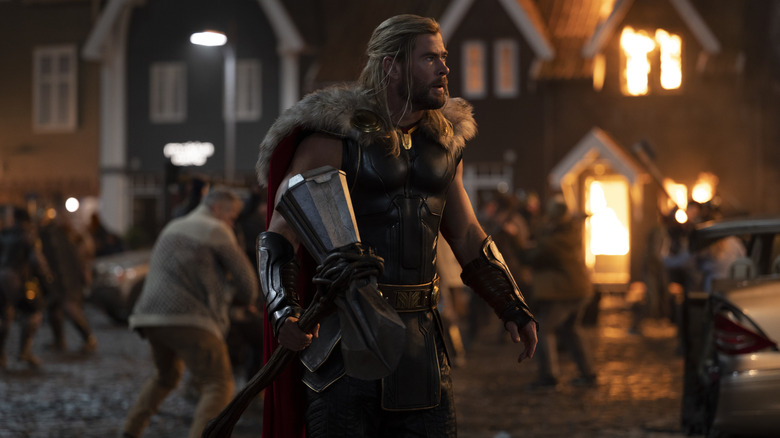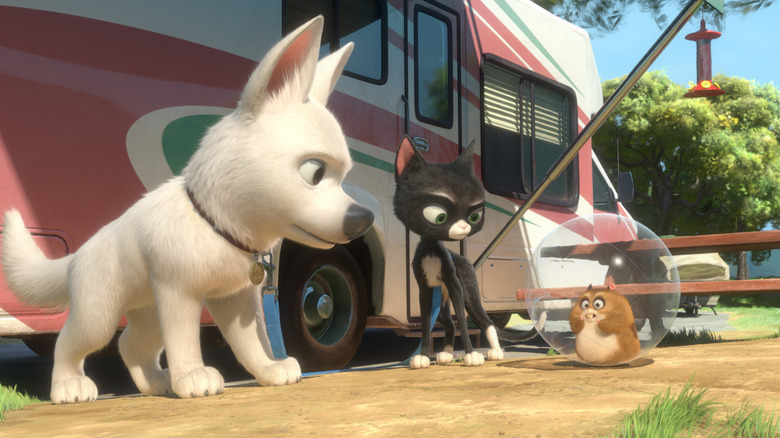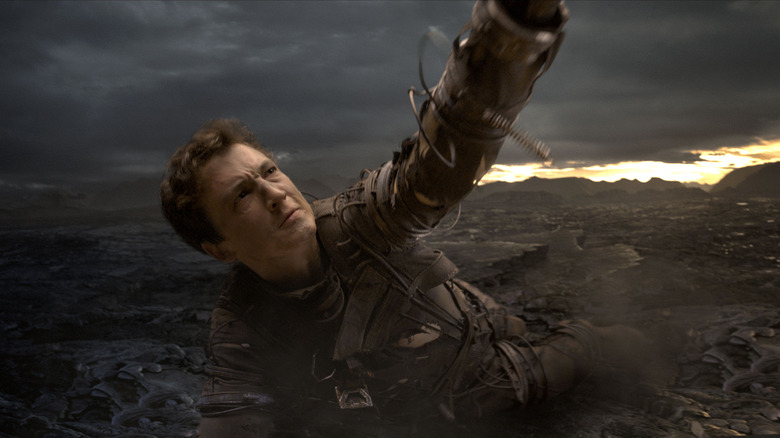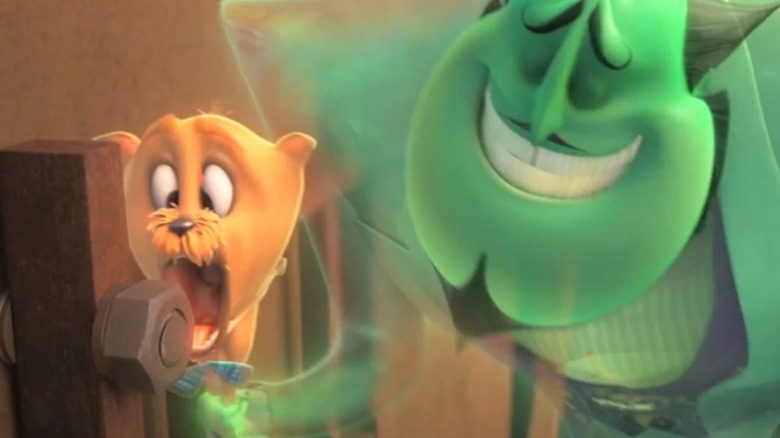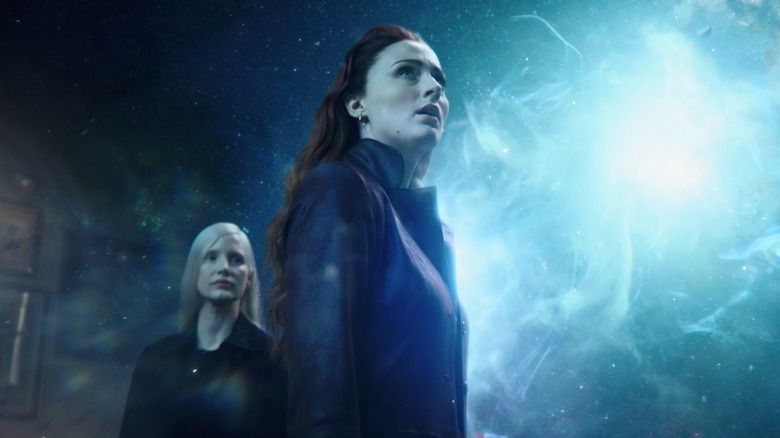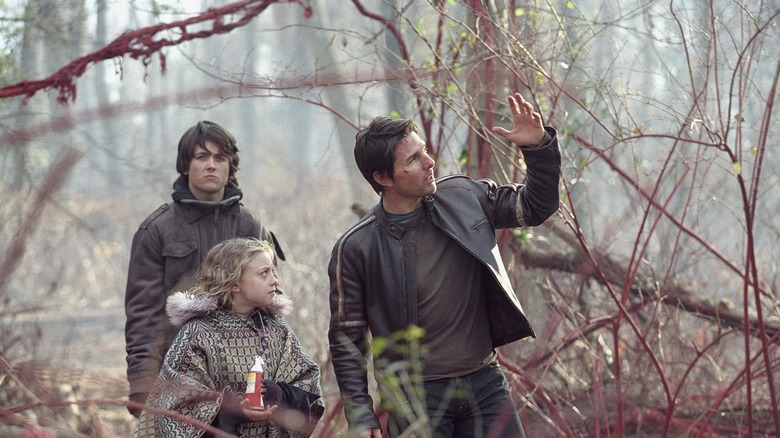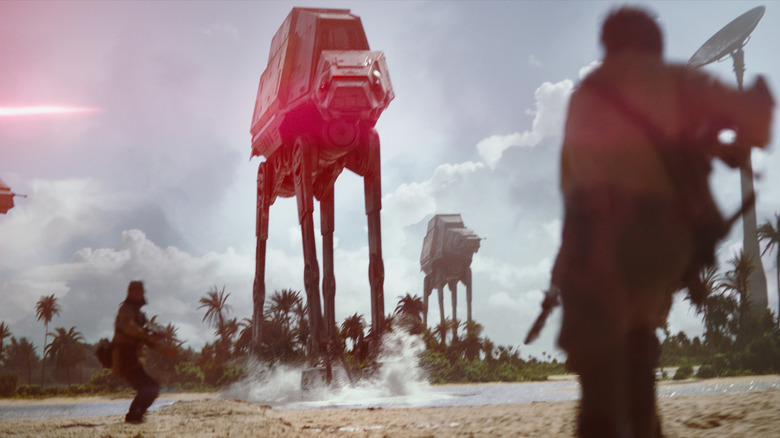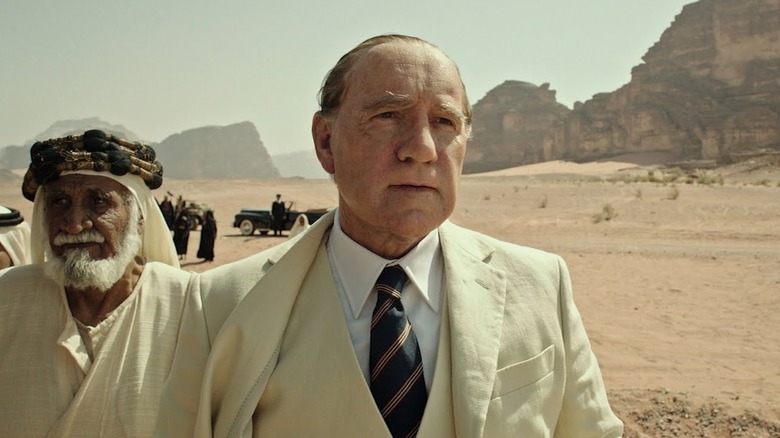The best movies feel complete. When you’re watching them, every moment feels perfectly composed, like they were just meant to appear on-screen. Of course, creating motion pictures is a messy business; all movies go through awkward patches, jettisoned ideas, and creative dead ends in the lengthy process of bringing concepts to the silver screen. This inevitably results in deleted scenes, including sequences that are cut from major films super late in the game. But even though they ended up being superfluous to the final product, these sequences stuck around long enough to gobble up resources (and lots of money) from the artists tasked with bringing these movies to life. That means removing these segments proved a costly, but essential, endeavor.
Usually, studios cut these kinds of scenes before exorbitant amounts of cash are spent on them. However, not all films are so lucky, and many end up producing super-pricey (and sometimes even super-hilarious) deleted scenes that will never be seen by the general public. The reasoning behind keeping these sequences locked up in a metaphorical box involves many factors; perhaps they were deemed too offensive, or maybe it’s as simple as the director not believing the public should see a project’s unused clips. Whatever led to them being M.I.A. from public consumption, the lack of access to them sometimes turns these expensive deleted scenes into the stuff cinematic legends are made of. Even if we can’t watch them, the stories of what these scenes entailed and why they were cut will go on and on.
The original Mike Myers audio from Shrek
You can’t have “Shrek” without Mike Myers. Though Chris Farley was originally set to play the character before his tragic passing, Myers using his distinct Scottish accent to voice the grumpy ogre is synonymous with the very DNA of this franchise. That undeniable reality makes it staggering to consider that, originally, Myers performed the character with a different voice.
It’s true: Shrek initially had a Canadian accent mimicking the voices Myers heard every day while growing up in his home country. However, Myers, a famous perfectionist, knew the role needed something else. This is when his wife (who’s from Scotland) suggested that Shrek should speak in a Scottish accent. Today, that sounds like a no-brainer decision, but at the time, DreamWorks Animation brass was extremely concerned about overhauling the character.
The problem here was that costly computer animation had already been created to match the Canadian voice Myers had concocted for Shrek. Changing him to a Scottish voice would require lots of moolah and energy. At the time, reports stated that the price for starting over on Shrek’s animation cost as much as $5 million, though Myers has disputed that figure in recent years. However much the final price was, removing the original “Shrek” scenes was not a cheap proposition. It turned out, however, to be an ingenious maneuver. Shrek’s Scottish accent was just what the character needed and proved integral to making him so lovable to moviegoers all over the world.
World War Z’s initial third act
The producers behind “World War Z” might’ve been happier to deal with actual hordes of zombies than all the chaos that unfolded behind the scenes of the 2013 Brad Pitt blockbuster. The already costly adaptation of author Max Brooks’ novel of the same name originally had a sprawling, action-heavy third act involving Pitt’s Gerry Lane brutally killing zombies in Russia. It was a massive conclusion, meant to make “World War Z” fit into a summer movie landscape defined by flicks like Michael Bay’s “Transformers” epics.
However, as the film entered the post-production phase, it became clear to all involved that the set piece traded depth for spectacle. Throughout 2012, artists like “Lost” creator Damon Lindelof were brought in to conjure up a new home stretch for “World War Z,” which would eventually evolve into a more intimate set piece that evoked classic zombie films by having Lane evade zombies in a hospital.
It’s never been divulged how much the original, Russia-based finale cost. Reports indicate that the “World War Z’ budget ballooned to $190 million, which must’ve included a good chunk for the original grand finish. However, the sequence’s CG zombies, which were set to be added in post-production, were never fully finished, which may have saved Paramount Pictures and other financiers at least some money. Still, removing the expansive set piece that took ages to shoot wasn’t a cheap process for “World War Z.” It was just one of countless hardships experienced by this 2013 blockbuster.
Maleficent’s original first act
Though it was ultimately a tidy moneymaker for Disney, “Maleficent” didn’t have an easy road to the big screen. Helmed by first-time director Robert Stromberg (primarily famous for his work as a production designer), the Angelina Jolie-led film underwent major reshoots written by “The Blind Side” director John Lee Hancock. The new material focused on “Maleficent’s” origin, chronicling the youngest years of the film’s titular lead character. These reshoots were extensive enough to include overhauling the cast members of “Maleficent’s” earliest sequence; future “Fallout” star Ella Purnell took over the role of Young Maleficent from India Eisley, for example.
Perhaps even more interestingly, all of the screen time involving Peter Capaldi and Miranda Richardson as King Kinloch and Queen Ulla, respectively, was deleted in this process. Though they were cast as Maleficent’s uncle and aunt, the actors were removed as a consequence of Stromberg wanting to cut “Maleficent’s” runtime down. It’s also likely that removing the Disney villain’s direct blood relatives was a way to make her blossoming connection with human boy Stefan extra meaningful.
Still, despite these factors, the costs of casting Richardson and Capaldi, not to mention the pricey effects used to turn them into fairies, make it somewhat surprising they never made it into “Maleficent’s” final cut. Their scenes were never released to the public, but, in 2024, some online sleuths uncovered photos of Capaldi in makeup as Kinloch, thus offering audiences a glimpse into “Maleficent’s” initial opening sequence.
Thor: Love and Thunder’s lost cameos
Peter Dinklage has gone from being an esteemed character actor in the 2000s to commanding top-dollar salaries, even when he’s not the primary figure in a movie or a TV show. For the final “Game of Thrones” season, for example, Dinklage took home a whopping $1.2 million per episode, and, allegedly, the actor made $2 million a few years later for his supporting role in “The Hunger Games: Ballad of Songbirds and Snakes.”
While Jeff Goldblum’s typical modern salary is hard to come by, it’s doubtful the “Thor: Ragnarok” and “Jurassic Park” veteran comes cheap, either. But despite this reality, Goldblum and Dinklage were paid to shoot “Thor: Love and Thunder” sequences that didn’t make the Marvel film’s theatrical release. Both men were reprising their characters from previous Marvel Cinematic Universe features, yet the prospect of following up on past MCU plot threads and utilizing two famous actors to do so wasn’t enough to keep either of them, even if just for a brief cameo, in “Love and Thunder’s” final cut.
Writer/director Taika Waititi has claimed that this footage will never be publicly released for the same reason it was cut in the first place: Waititi didn’t think these sequences were that good. Not even the mighty acting talents of both Dinklage and Goldblum (not to mention the cost of their salaries) could make their respective “Love and Thunder” screentime sterling enough to warrant public exhibition. Instead, whatever they were doing in “Love and Thunder” will have to exist only in the imaginations of MCU fans.
The initial version of Bolt
Walt Disney Animation Studios’ “Bolt” had a rough journey to movie theaters. Long before its theatrical debut, the movie was meant to be the big follow-up directorial effort for “Lilo & Stitch” filmmaker Chris Sanders. At the time, it was going by the title “American Dog” and involved a similar plot about a Hollywood canine getting lost in everyday America, albeit with wackier character designs that evoked Sanders’ distinctive art style.
Announced in late 2003, Sanders and the team spent years working on the project for a summer 2008 release. Unfortunately, all this effort was for naught. At the start of 2006, Disney bought Pixar Animation Studios. That outfit’s leadership, namely John Lasseter and Ed Catmull, would take over Disney Animation Studios and begin evaluating in-development projects — including “American Dog.”
By late 2006, Sanders left the project over creative disputes with the new Disney Animation leadership. After this, an entirely new creative team was assigned to the movie, which quickly developed into a new production titled “Bolt.” In the book “On Animation: The Director’s Perspective Vol. 2,” Sanders confirmed that the final product was worlds removed from his initial vision. While it’s never come out how much money was spent on “American Dog” before its “Bolt” transformation, the film’s three years of production couldn’t have been cheap. “Bolt” turned into a solid moneymaker, but getting there required a painful and expensive creative detour.
Fantastic Four’s original finale
Many comic book movies have to reshoot key scenes. Few, however, do so without the scene’s most critical cast member around. And yet, Toby Kebbell, the actor tasked with playing Victor von Doom/Doctor Doom in director Josh Trank’s “Fantastic Four,” has revealed that he wasn’t on set for the movie’s reshoots. Instead, another actor portrayed Doom for these sequences.
This detail encapsulates what a mess “Fantastic Four” was to produce, with many scenes from the feature’s initial cut being removed during reshoots. Particularly impacted during this process was the title’s original ending. 20th Century Fox has never officially released any of these VFX-heavy sequences, nor has it been made public how much the deleted climactic segments cost. Given that they were set in another dimension and deployed lots of CG elements, though, one can only assume they weren’t cheap.
In the years since “Fantastic Four’s” dismal box office run, dedicated folks on the internet have compiled a smattering of publicly released images and B-roll footage, giving the general public a sense of what these unreleased deleted scenes could’ve looked like. Pivotal moments seen in the “Fantastic Four” trailers, like Reed Richards desperately stretching out his arm on an alien surface or Sue Storm crying over Johnny’s body, appear to have been among these removed sequences. Aside from glimpses in early trailers, however, none of the material was officially released as part of the endless disaster that was “Fantastic Four.”
The entire B.O.O.: Bureau of Otherworldly Operations movie
Years before Warner Bros. Discovery canned “Batgirl” deep into its post-production, DreamWorks Animation canceled the feature “B.O.O.: Bureau of Otherworldly Operations” just a little over six months before its announced release date. Starring Seth Rogen and Melissa McCarthy as ghostly heroes fighting an evil spectral entity (played by “Ghostbusters” veteran Bill Murray), the project was helmed by future “Emoji Movie” director Tony Leondis. With Octavia Spencer, Rashida Jones, Jennifer Coolidge, and Matt Bomer among the actors rounding out its ensemble cast, animators were tirelessly working on the production when it was shelved. Some estimates suggest as much as 60% of “B.O.O.” was fully completed when the axe fell.
Despite spending an alleged $100+ million on “B.O.O.,” former DreamWorks head honcho Jeffrey Katzenberg and other executives felt it was best that the production never see the light of day. Allegedly, concerns festered over the movie’s quality, how its ending was shaping up, and the fact that the plot hinged on Rogen’s protagonist being a recently deceased father. The latter element in particular plagued the film in its final months of existence, as executives wondered whether kids would want to see a feature with such a heavy plot detail. All these problems ensured “B.O.O.’s” last-minute demise, and to this day, DreamWorks has never officially released any footage from the aborted production. However, for the curious, snippets of “B.O.O.” animation (some even fully finished) have materialized on the internet in an unofficial capacity.
Dark Phoenix’s first attempt at a third act
“Fantastic Four” isn’t the only 20th Century Fox Marvel movie to go through a last-minute overhaul focused on its third act. 2019’s “Dark Phoenix” also originally had very different plans for what its grand finale would look like.
While promoting “Dark Phoenix’s” theatrical release, star Tye Sheridan revealed that one of the film’s initial climaxes involved Charles Xavier and the X-Men visiting the President of the United States at the United Nations building in New York City to inform him that alien invaders are plotting to assassinate him. Jean Grey would’ve caused chaos at the U.N. in a sequence that also involved Skrulls. This deleted subplot would explain why “Dark Phoenix” cast notable actor Brian d’Arcy James as the POTUS yet only briefly used him in the final cut.
James McAvoy later added another layer of intrigue to this behind-the-scenes chaos by noting that “Dark Phoenix” had to change its finale to avoid evoking comparisons to another modern superhero title. That rival comic book movie wasn’t named, but it was likely “Captain Marvel,” a 2019 Marvel Studios project that featured Skrulls. This would explain “Dark Phoenix’s” decision to utilize the D’Bari aliens and a smaller-scale finale set largely within train cars instead. Despite Sheridan and McAvoy’s remarks, it’s never been revealed what this initial deleted climax cost to make. However, removing and reshooting the finale allegedly ended up ballooning “Dark Phoenix’s” price tag past the $200 million mark.
The Camelot sequence in War of the Worlds
Steven Spielberg’s films tend to become such beloved masterpieces that even their deleted scenes take on a mythic reputation. An unreleased deleted “Jaws” sequence, for example, has become legendary because of how brutally violent it reportedly was.
But unlike some deleted sci-fi movie scenes that fans never even knew existed, one unseen Spielberg scene that’s tantalized the imaginations of genre cinema fans for years is a major, alien-heavy sequence from “War of the Worlds.” This scene, given the moniker “Camelot” by the film’s devotees, took place late in the film and saw Ray and his family watching alien tripods descend on people hiding in a once-pristine neighborhood. The trio observes the mechanical entities murdering humans as they cower inside their homes. A handful of “Camelot” images were published in Cinefex in mid-2005, but otherwise, this sequence has never been publicly released.
Given that it would’ve heavily centered on digital tripods and practical locations being decimated by these entities, “Camelot” had to be a costly sequence to produce. Despite this, it didn’t make it into the final cut, nor did the home video release of “War of the Worlds” include it or any other deleted scenes. And yet, decades after “War of the Worlds” premiered, “Camelot” has become legendary on the internet. Online petitions have been launched demanding the sequence’s release, and a quick Google search delivers countless fan renderings of the set piece.
Rogue One’s original climax
Today, the “Rogue One” corner of the “Star Wars” universe is a widely acclaimed domicile that gave the world the beloved TV show “Andor.” However, a year before “Rogue One’s” release, the blockbuster was a tormented affair. Director Gareth Edwards’s original cut was deemed problematic enough to warrant extensive reshoots, with “Michael Clayton” director Tony Gilroy conscripted to write new material and help guide this portion of filming. While virtually every nook and cranny of “Rogue One” was altered by this process, much of the overhauling focused on “Rogue One’s” final act, which involved the film’s leads stealing the Death Star plans and finally working together as a group.
It’s not clear what the exact costs were of the scenes that were jettisoned from the final cut, but Gilroy alone earned at least $5 million just for creating the new “Rogue One” material. Who knows how much it cost to build the sets and hire crew members and other necessities needed for both the original and reshot versions of key scenes?
Despite these deleted moments becoming infamous, none of them would make it to “Rogue One’s” home video release. In Edwards’ mind, these eschewed elements were so brief that they didn’t even qualify as “scenes,” and, given their immense brevity, making them available to audiences didn’t make much sense to the filmmaker. Thus, “Star Wars” geeks can only experience a smattering of lost “Rogue One” moments in the film’s pre-release trailers and sizzle reels.
The original Kevin Spacey scenes in All The Money in the World
One of the darkest and most chaotic examples of costly scenes being cut from a movie at the last minute involves the 2017 Ridley Scott feature “All the Money in the World.” This crime thriller hinged its very first trailer on the closing reveal that Kevin Spacey played the elderly J. Paul Getty. Combine the fact that Spacey was making as much as $500,000 an episode on “House of Cards” as late as 2017 with the costly prosthetic effects used to add decades to his appearance, and this particular role was undoubtedly a tremendous financial commitment for the studio. However, a series of sexual assault and misconduct allegations against Spacey threw a wrench into the “All the Money in the World” machine.
Weeks before “World’s” late December 2017 release, Scott and company had to reshoot Spacey’s scenes with Christopher Plummer. This endeavor cost an additional $10+ million on top of the money already laid out to shoot the original sequences. Sometimes it’s mysterious why costly deleted scenes aren’t released on physical media for viewers, but it’s very obvious why Scott’s been adamant that Spacey’s “All the Money in the World” scenes will never see the light of day. With new allegations and lawsuits being filed against Spacey as late as 2025, the artists behind “World” don’t want to give him more attention.

